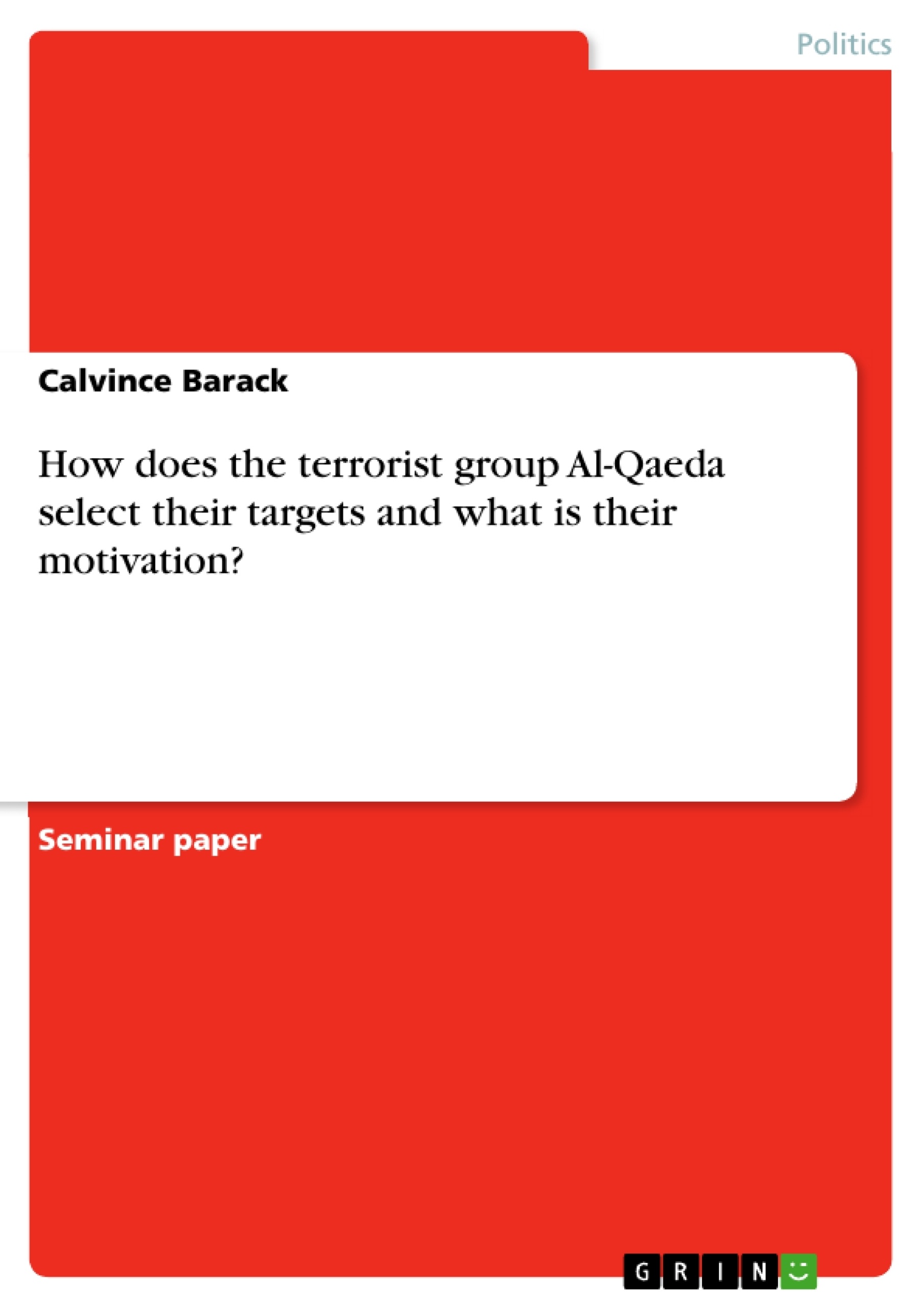The paper sets out to show the link between the attacked targets and motivations of Al-Qaeda (AQ) as a terrorist group. It introduces AQ and outlines its goal of establishing an Islamic Caliphate and the immediate objective of driving out the United States Interest from the Muslim world. It proceeds to provide data on the attacked targets claimed by AQ.
The data is analyzed using the Constructivist theory to expose the development of identities and how they relate to the immediate objective and the attacked targets. It proceeds to discuss the cases where AQ claimed responsibility by looking at the messages in relation to the motivation and the attacked target. Further, it looks at cases where AQ was suspected but did not formally claim responsibility to establish the consistency between the AQ’s goal and attacked target understood within the constructed identity.
The paper finally concludes that attacked targets are very consistent with AQ’s motivations hence the ability to use the combination to identify a terrorist group responsible for an attack where both are known and no single group claims responsibility.
Inhaltsverzeichnis (Table of Contents)
- Background
- Methodology
- Research Question
- Method
- Study Limitations
- Literature Review
- Data Presentation and Analysis
- Theory
- Discussion
- Conclusion
- References
Zielsetzung und Themenschwerpunkte (Objectives and Key Themes)
This paper aims to explore the relationship between the targets selected by Al Qaeda (AQ) and their motivations as a terrorist group. It focuses on AQ's objective of establishing an Islamic Caliphate and its immediate goal of removing United States interests from the Muslim world. The paper analyzes data on targets claimed by AQ using Constructivist theory, examining how identities are developed and relate to these objectives and targets. Through analyzing messages from AQ, the paper explores the connection between their motivations and target selection. It also investigates instances where AQ was suspected but did not claim responsibility, highlighting the consistency between their goals, targets, and constructed identities.
- The motivations and goals of Al Qaeda (AQ) as a terrorist group.
- The relationship between AQ's objectives and target selection.
- The role of identity development in understanding AQ's actions.
- The analysis of AQ's messages to understand their motivations and target selection.
- The consistency between AQ's goals, targets, and constructed identities.
Zusammenfassung der Kapitel (Chapter Summaries)
- Background: This chapter provides an overview of terrorism as a concept, highlighting its key features, particularly the selection of targets and its potential connection to strategic objectives. It introduces Al Qaeda (AQ) as a non-state terrorist group and discusses the influence of Osama bin Laden and Ayman al-Zawahiri on the group's ideological outlook and strategic direction.
- Methodology: This chapter outlines the research question, methods, and study limitations employed in the paper. It clarifies the scope of the research and its specific approach to analyzing the relationship between AQ's targets and motivations.
- Literature Review: This chapter provides a comprehensive overview of existing literature on Al Qaeda (AQ), drawing on previous research, analysis, and perspectives on the group's activities and ideologies.
- Data Presentation and Analysis: This chapter presents the data collected on targets claimed by AQ and utilizes Constructivist theory to analyze this data. It examines how the development of identities within AQ influences their strategic decisions and target selection.
- Theory: This chapter explores the theoretical framework employed in the paper, outlining the key concepts and principles of Constructivist theory. It explains how this theory provides a valuable lens for understanding the relationship between AQ's identities, motivations, and target selection.
- Discussion: This chapter delves into the analysis of specific cases where AQ claimed responsibility for attacks, examining the messages released by the group and their connection to their motivations and targets. It also explores instances where AQ was suspected but did not claim responsibility, further examining the consistency between their goals, targets, and constructed identities.
Schlüsselwörter (Keywords)
The paper focuses on key concepts such as Al Qaeda, terrorism, target selection, motivations, Islamic Caliphate, Constructivist theory, identity development, and strategic direction. These concepts are explored in relation to understanding the actions and choices made by Al Qaeda, highlighting the complex interplay between their ideologies, objectives, and target selection strategies.
- Citar trabajo
- Calvince Barack (Autor), 2014, How does the terrorist group Al-Qaeda select their targets and what is their motivation?, Múnich, GRIN Verlag, https://www.grin.com/document/384339



